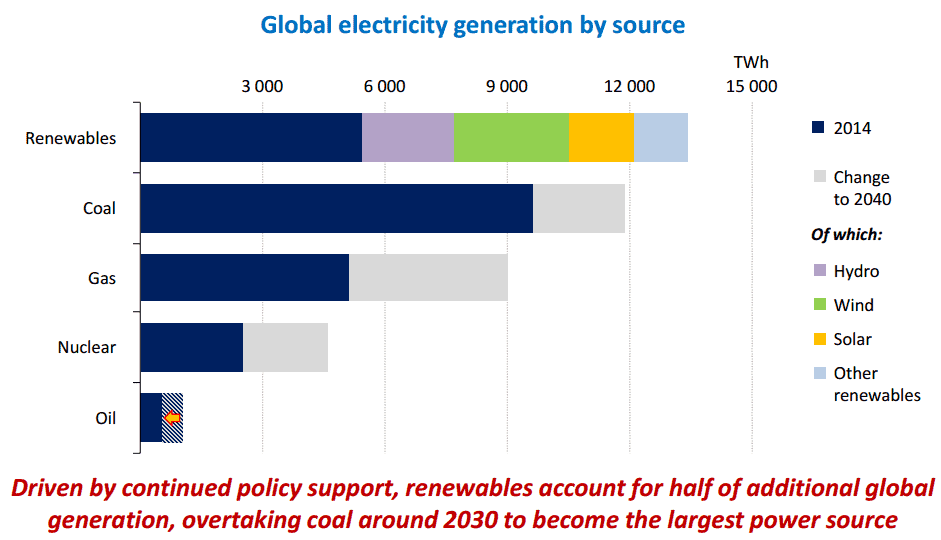Right now coal accounts for 39% of all the world’s generated electricity, with gas coming in second but still trailing behind at 22%. King coal is dying though, as ZME Science reported earlier. In less than 15 years, the International Energy Agency estimates renewable energy will become the dominant energy source in the world. Moreover, these estimates are conservative since the report assumes many coal plants will still be operational in 2030, which is unlikely.
The report titled World Energy Outlook 2015 signals the transition to a new energy paradigm. The authors note that coal consumption has peaked and the value of coal companies has taken a plunge for the worst. It’s foreseeable that there will be no rebound given the agreement most of the world’s governments signed in Paris last December to limit warming to 1.5 degrees C. Like oil and other fossil fuels, coal will become a stranded asset once stricter CO2 policies come into place, along with a tax on carbon.
Meanwhile, renewable energy capacity is being added at a high pace with each year signaling a record. In 2014, 130 GW were added. The renewable energy generated by Germany is more than that generated in the whole African continent!

We seem to be on the brink of a tipping point, as renewable energy grows ever cheaper. Though dirt cheap today, oil and other fossil fuels will likely spike again. If taxed, then there will be no incentive for the market to use it. The graph below tells you all you need to hear.

The key phrase here though is “driven by continued policy support”. In the same report, the authors stress that the Middle East can keep oil under $50 barrel well into the 2020s, which could seriously slow renewable energy growth. Yet, if the COP21 Paris pledges will be upheld, then renewable energy support is not only a wise course of action, but a defining solution to the problem of global warming.

Notice that the forecast says emissions will flatline, but that’s not entirely good news. These ought to fall at least to 1990 levels if we’re to avert catastrophic global warming. Under the scenario presented by the IEA, the planet still warms by 2.7°C by 2100. Something good might happen until then: all coal plants might be shut down, everywhere. In the next three years, China will shut down 4,300 coal mines; Alberta already has its own carbon tax and is preparing to shut down all coal plants by 2030, while the UK will decommission its coal plants by 2025.
“With 60 cents of every dollar invested in new power plants to 2040 spent on renewable energy technologies, global renewables-based electricity generation increases by some 8,300 TeraWatt-hours (more than half of the increase in total generation),” reads the IEA report. That increase is “equivalent to the output of all of today’s fossil-fuel generation plants in China, the United States and the European Union combined.”
via Think Progress.






